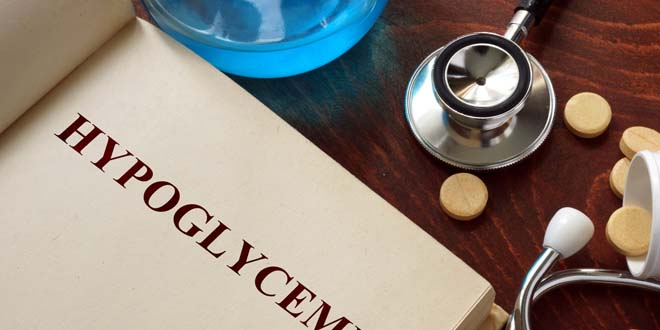
If you are at risk for severe hypoglycemia, there are some important things you can do to prevent and manage it. Read on to learn about 6 best practices to manage low blood sugar emergencies.
1. Know the symptoms
Knowing the symptoms of hypoglycemia – and responding quickly when you experience them – is very important if you are at risk for severe low blood sugar emergencies.
The symptoms of mild to moderate hypoglycemia include trembling, sweating, anxiety, difficulty concentrating and nausea. The symptoms of severe hypoglycemia include confusion and disorientation, convulsions or seizures and loss of consciousness.
A good way to keep on top of hypoglycemia events is to keep an accurate record of your blood sugars, including when you experience a low blood sugar, what your reading was, and details regarding what might have caused it. Low blood sugar can result from a number of factors, including not eating enough, skipping a meal or snack, taking too much medication, exercising more than you anticipated and drinking alcohol
A record of your low blood sugar events can help you and your diabetes healthcare team figure out any behaviours or patterns that are causing lows, and together you can work to fix them.
2. Check blood sugar levels often
Your diabetes healthcare team can help you develop a blood sugar monitoring regimen that’s best for your individual situation.
How often you should test your blood sugar depends on a number of factors, including:
- What type of diabetes you have, i.e. type 1, type 2 or gestational diabetes
- How long you have had diabetes
- Whether your A1C is at target
- What types of insulin or medication you take to manage your condition
- Whether you are ill
- Whether you are having frequent hypoglycemia episodes, especially moderate to severe hypoglycemia
3. Keep fast-acting carbohydrate and glucagon on hand
Fast-acting carbohydrate for treatment of mild to moderate hypoglycemia
Mild to moderate hypoglycemia is treated with 15 grams of fast-acting carbohydrate. Examples of this treatment include:
- 15 grams glucose in the form of glucose tablets
- 2/3 cup (150 mL) of fruit juice or regular soft drink
- 6 Life Savers®
- 1 tablespoon of sugar dissolved in water
- 1 tablespoon (15 mL) of honey
Glucagon for treatment of severe hypoglycemia
There are two forms of glucagon medication used to treat severe hypoglycemia: nasal powder and injection. The nasal powder comes in a small tube that has a plunger on one end. The tube is gently inserted into a nostril and when the plunger is pressed, the dose of glucagon nasal powder is absorbed through the nose. The glucagon injection kit contains a vial of powdered glucagon and either another vial of sterile water or a syringe that is preloaded with sterile water. The glucagon is mixed with the sterile water, and then injected under the skin.
If you are at risk for severe hypoglycemia, you should carry glucagon with you at all times. At home, make sure it’s stored in a handy location, and that your family members know where it is. Away from home, carry it in your purse or backpack, and make sure that family members, friends, co-workers or school teachers know where to find it.
Learn more about glucagon here.
4. Develop a low blood sugar emergency plan
There are a number of steps you can take to prevent and manage a low blood sugar emergency:
- Check your blood sugar regularly
- Eat meals and snacks on time
- Carry a source of fast-acting carbohydrate, as well as glucagon, with you at all times
- Recognize and react quickly to hypoglycemia symptoms, and consume 15 grams of carbohydrate if needed to treat a low
- Make sure your family and friends know how to treat a severe low blood sugar with glucagon
5. Share your plan with others
Sharing your low blood sugar emergency plan with trusted family members and friends will help ensure that you can be treated quickly should you have a severe hypoglycemia episode. Educating the people close to you will ensure that they recognize the signs and symptoms of severe hypoglycemia and understand how to treat it.
Consider telling the following people about your risk for severe hypoglycemia and your low blood sugar emergency plan.
- Family members, including your husband or wife, and children who are old enough to understand the situation and take action accordingly
- Your boyfriend or girlfriend
- Trusted friends
- Co-workers
- School teachers and nurses
6. Wear medical identification
Wearing medical identification – such as a necklace, bracelet or sports band – is crucial if you are at risk for a low blood sugar emergency. In the event that you lose consciousness or are unable to communicate with those around you, the medical ID will let people know about your condition so that they can take action accordingly by calling 911 or emergency services.



